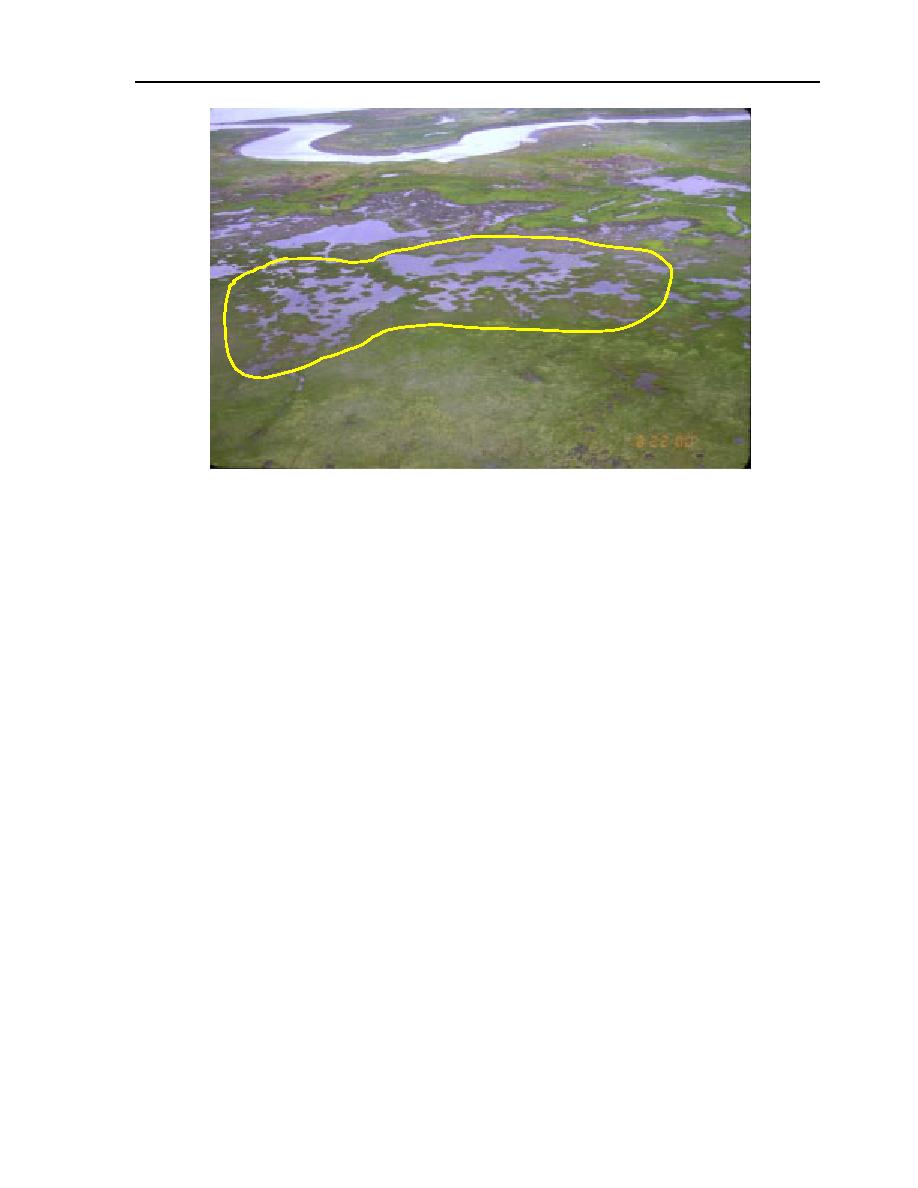
III-3. COMPOSITE SAMPLING AND ANALYSIS
65
Pond 226
Pond 246
Figure III-3-2. Oblique view of region from which Composites A-1 to A-19 were
collected in May and August 2000. No white phosphorus was detected. (Photo-
graph taken 22 August 2000.)
indeed isolated hotspots of contamination in
posites collected this year. All previous
the ponds that had been missed in previous
samples were blank. However, in 1999, six
sampling efforts. Also, every pond sampled
telemetry birds died in Area C/D, five of
and found uncontaminated could be elimi-
which had white phosphorus in their giz-
nated as a potential source and dropped from
zards.
consideration for future remediation actions.
Northern C
The large permanent ponds (183 and 146)
Area C/D
This area is composed of a large complex
of Area C have been extensively sampled, and
of small open water pools, most less than 25
white phosphorus has been found at high con-
m in length, among a sedge and bulrush
centrations in these ponds. The pond/marsh
marsh. A very few large ponds, such as Pond
complex on the north end of Area C has not
40, border the area to the south and east. The
been extensively sampled except for Pond
boundaries of these small open water pools
155, which was highly contaminated with
have changed over the years, and many have
white phosphorus. Pond 155 is the largest
not been mapped as separate ponds in the
pond of about a dozen small ponds that have
ERF GIS database. We collected 32 additional
been mapped within the marsh. Like Area C/
grid composite samples from open water
D, pond boundaries are not well defined and
pools in the marsh to the north and west of
have changed over time. Given that six of the
Pond 40 (Fig. III-3-3 and III-3-4.). We selected
telemetry mortalities that had white phospho-
all available pools within this area that were
rus in their gizzards used the marsh in Area
large enough (stretching at least 20 m in one
C just prior to their death, the small ponds
dimension) to lay out a composite grid. Six-
within this marsh may be a source of poison-
teen discrete samples were collected in Au-
ing. In May 2000 we collected grid compos-
gust 1992 near the southernmost grid com-
ites from ponds within the marsh that had



 Previous Page
Previous Page
